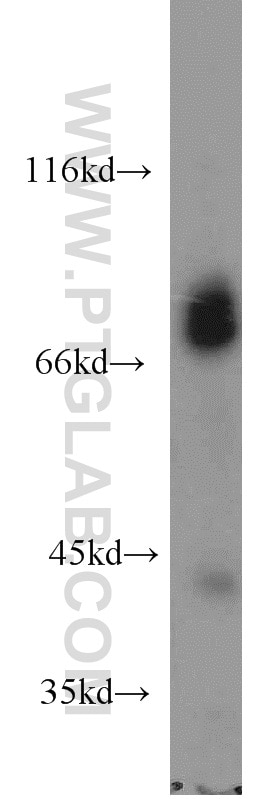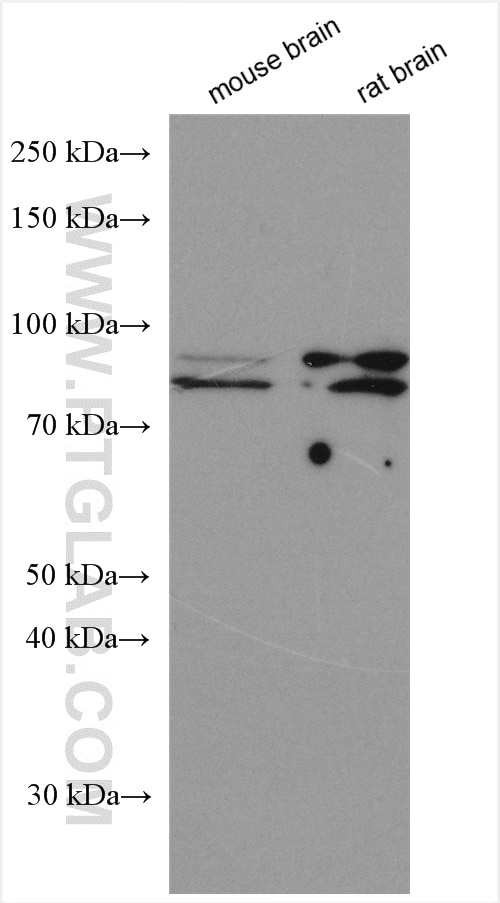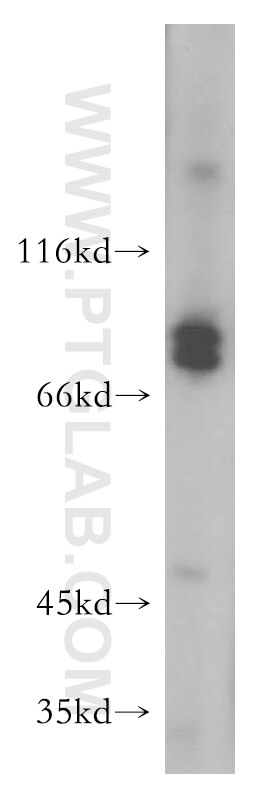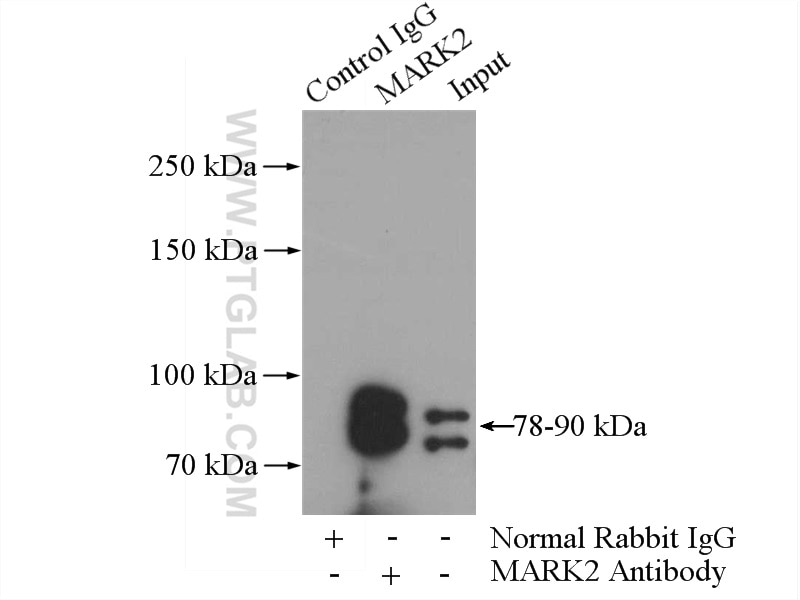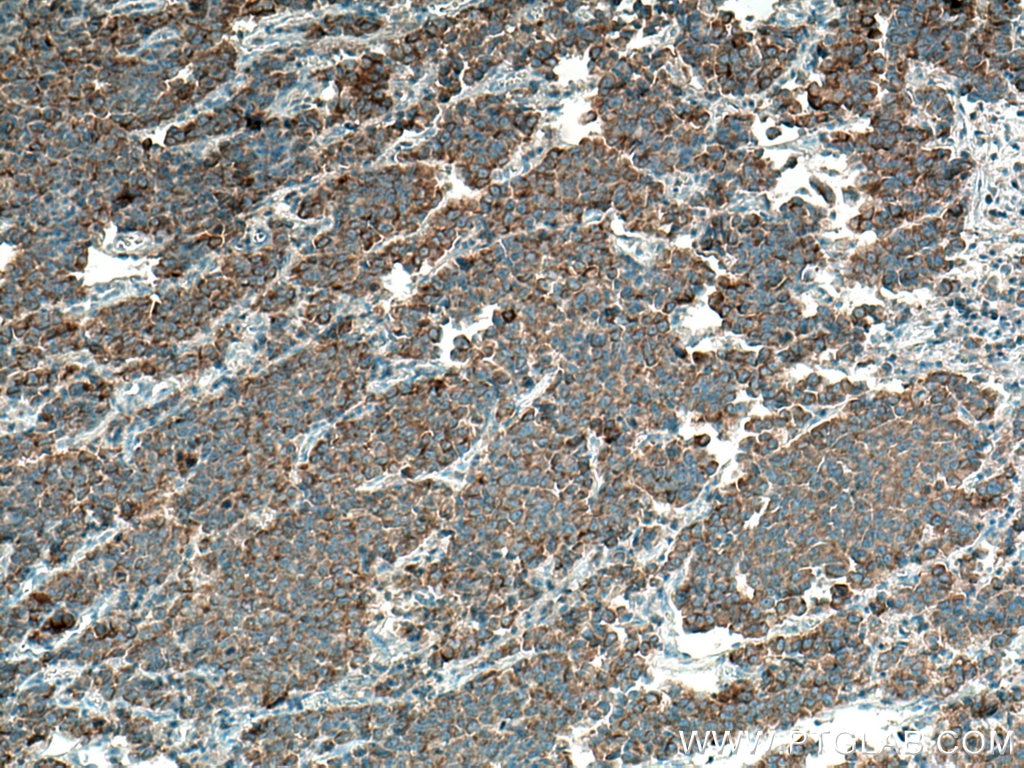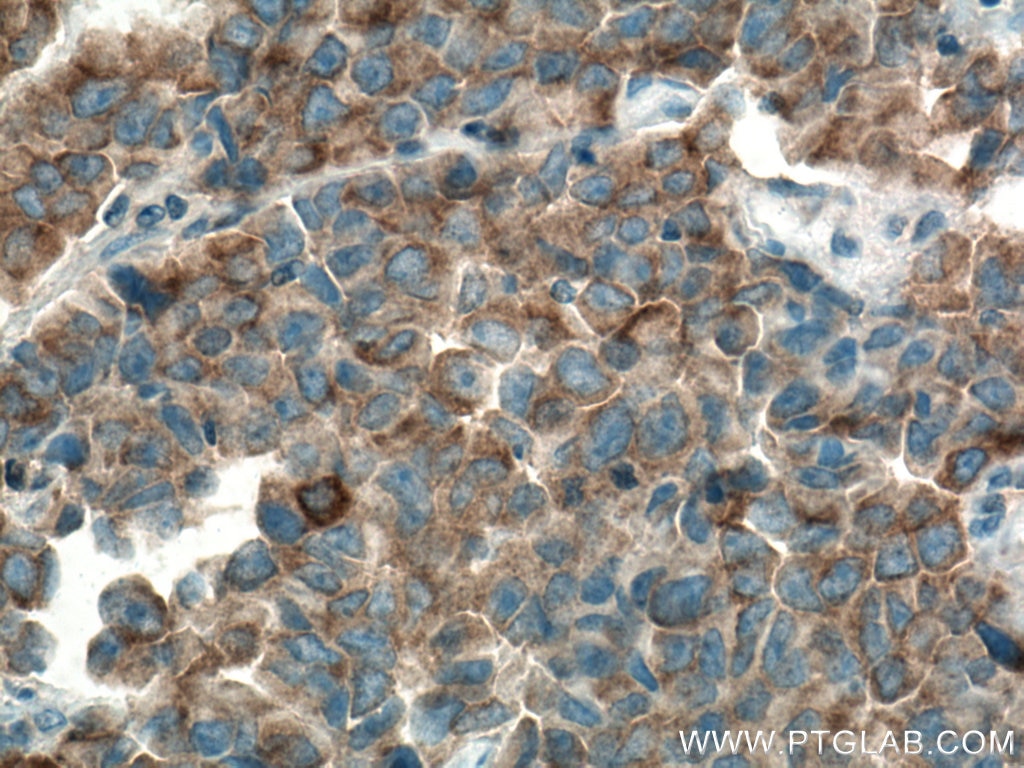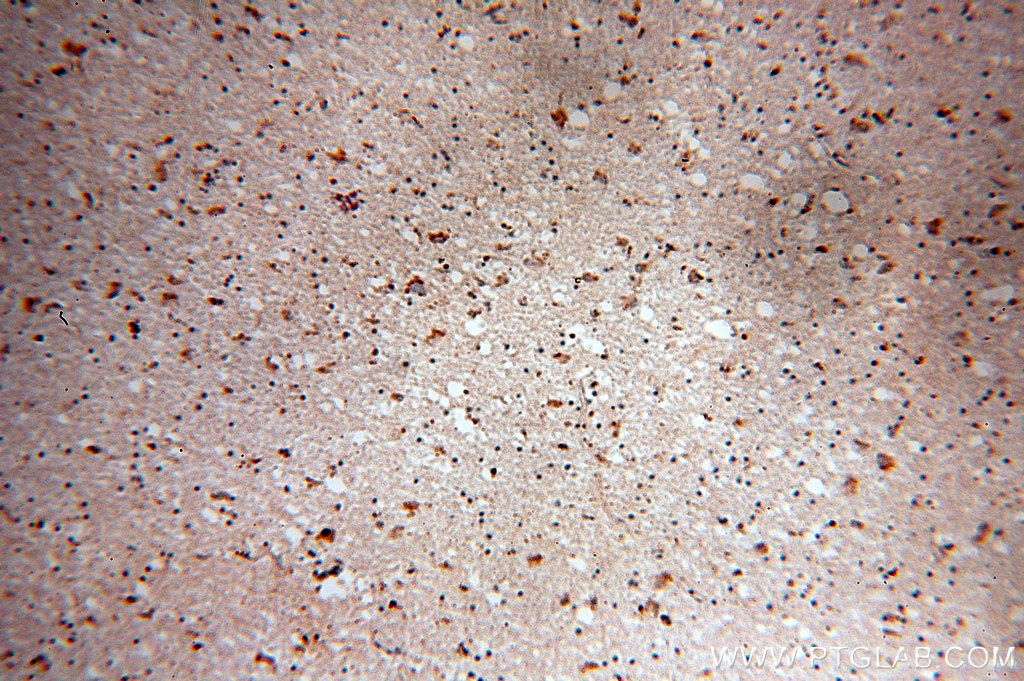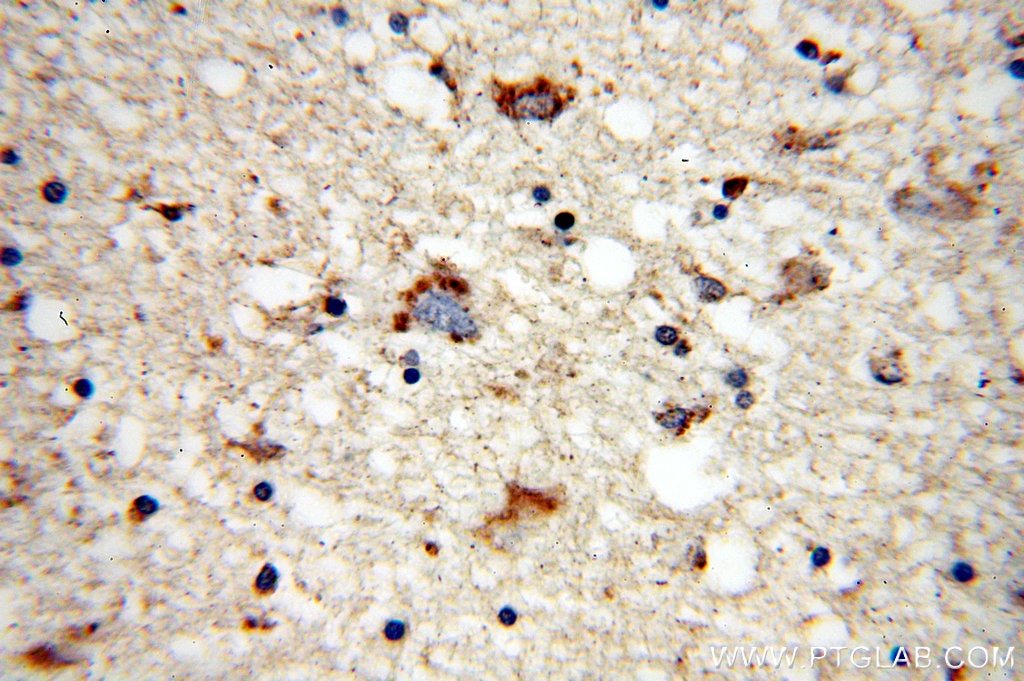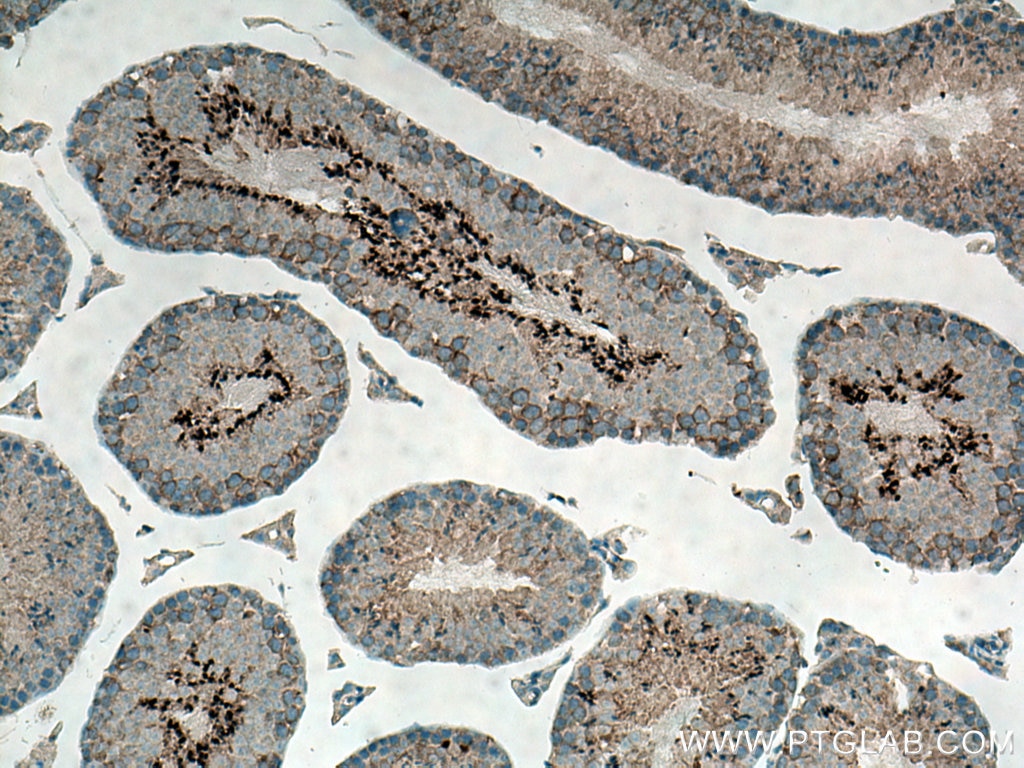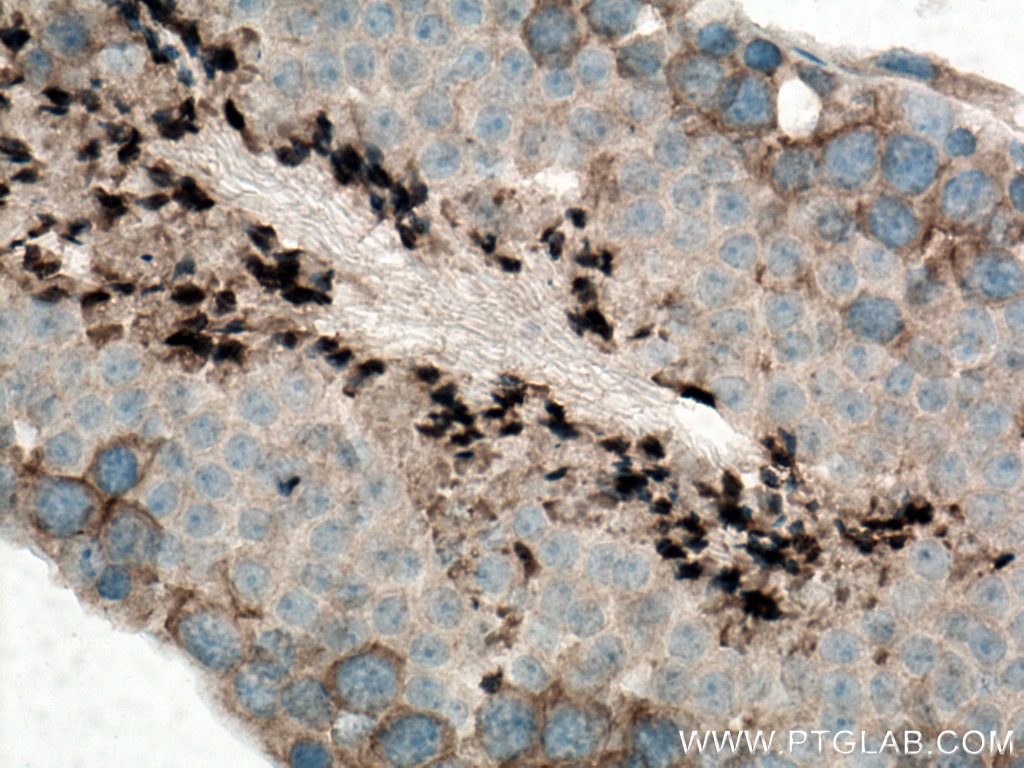- Featured Product
- KD/KO Validated
MARK2 Polyklonaler Antikörper
MARK2 Polyklonal Antikörper für WB, IP, IHC, ELISA
Wirt / Isotyp
Kaninchen / IgG
Getestete Reaktivität
human, Maus, Ratte
Anwendung
WB, IHC, IF, IP, ELISA
Konjugation
Unkonjugiert
Kat-Nr. : 15492-1-AP
Synonyme
Geprüfte Anwendungen
| Erfolgreiche Detektion in WB | Maushirngewebe, Rattenhirngewebe |
| Erfolgreiche IP | Rattenhirngewebe |
| Erfolgreiche Detektion in IHC | humanes Prostatakarzinomgewebe, humanes Hirngewebe, Maushodengewebe Hinweis: Antigendemaskierung mit TE-Puffer pH 9,0 empfohlen. (*) Wahlweise kann die Antigendemaskierung auch mit Citratpuffer pH 6,0 erfolgen. |
Empfohlene Verdünnung
| Anwendung | Verdünnung |
|---|---|
| Western Blot (WB) | WB : 1:500-1:2000 |
| Immunpräzipitation (IP) | IP : 0.5-4.0 ug for 1.0-3.0 mg of total protein lysate |
| Immunhistochemie (IHC) | IHC : 1:200-1:800 |
| It is recommended that this reagent should be titrated in each testing system to obtain optimal results. | |
| Sample-dependent, check data in validation data gallery | |
Veröffentlichte Anwendungen
| KD/KO | See 4 publications below |
| WB | See 14 publications below |
| IHC | See 1 publications below |
| IF | See 3 publications below |
| IP | See 1 publications below |
Produktinformation
15492-1-AP bindet in WB, IHC, IF, IP, ELISA MARK2 und zeigt Reaktivität mit human, Maus, Ratten
| Getestete Reaktivität | human, Maus, Ratte |
| In Publikationen genannte Reaktivität | human, Maus, Ratte |
| Wirt / Isotyp | Kaninchen / IgG |
| Klonalität | Polyklonal |
| Typ | Antikörper |
| Immunogen | MARK2 fusion protein Ag7884 |
| Vollständiger Name | MAP/microtubule affinity-regulating kinase 2 |
| Berechnetes Molekulargewicht | 88 kDa |
| Beobachtetes Molekulargewicht | 77-90 kDa |
| GenBank-Zugangsnummer | BC008771 |
| Gene symbol | MARK2 |
| Gene ID (NCBI) | 2011 |
| Konjugation | Unkonjugiert |
| Form | Liquid |
| Reinigungsmethode | Antigen-Affinitätsreinigung |
| Lagerungspuffer | PBS with 0.02% sodium azide and 50% glycerol |
| Lagerungsbedingungen | Bei -20°C lagern. Nach dem Versand ein Jahr lang stabil Aliquotieren ist bei -20oC Lagerung nicht notwendig. 20ul Größen enthalten 0,1% BSA. |
Hintergrundinformationen
MARK2 is also named as EMK1(ELKL motif kinase 1), Par1b and belongs to the CAMK Ser/Thr protein kinase family. Par1b/MARK2 plays a critical role in neuronal polarity in the process of axon specification from multiple candidate neurites using primary cultures of mammalian hippocampal neurons(PMID:20194617). It has 16 isoforms produced by alternative promoter usage and alternative splicing with the molecular mass of 77-90kDa and can exsit as a dimer(PMID:16803889).
Protokolle
| PRODUKTSPEZIFISCHE PROTOKOLLE | |
|---|---|
| WB protocol for MARK2 antibody 15492-1-AP | Protokoll herunterladen |
| IHC protocol for MARK2 antibody 15492-1-AP | Protokoll herunterladenl |
| IP protocol for MARK2 antibody 15492-1-AP | Protokoll herunterladen |
| STANDARD-PROTOKOLLE | |
|---|---|
| Klicken Sie hier, um unsere Standardprotokolle anzuzeigen |
Publikationen
| Species | Application | Title |
|---|---|---|
Mol Cell An AMPK-Independent Signaling Pathway Downstream of the LKB1 Tumor Suppressor Controls Snail1 and Metastatic Potential. | ||
Nat Commun TNK1 is a ubiquitin-binding and 14-3-3-regulated kinase that can be targeted to block tumor growth.
| ||
J Neurosci Unbiased proteomics of early Lewy body formation model implicates active microtubule affinity-regulating kinases (MARKs) in synucleinopathies. | ||
FASEB J Cdc42 is involved in NC1 peptide-regulated BTB dynamics through actin and microtubule cytoskeletal reorganization. | ||
FASEB J Regulation of the blood-testis barrier by a local axis in the testis: role of laminin α2 in the basement membrane. | ||
J Cell Sci Molecular determinants of αVβ5 localization in flat clathrin lattices - role of αVβ5 in cell adhesion and proliferation.
|
Rezensionen
The reviews below have been submitted by verified Proteintech customers who received an incentive for providing their feedback.
FH Lucas (Verified Customer) (08-28-2025) | The antibody is working reasonably in WB, but is not really suitable for IF, at least in the U251-MG cell line. This could be due to a large fraction of soluble MARK2 protein.
|
